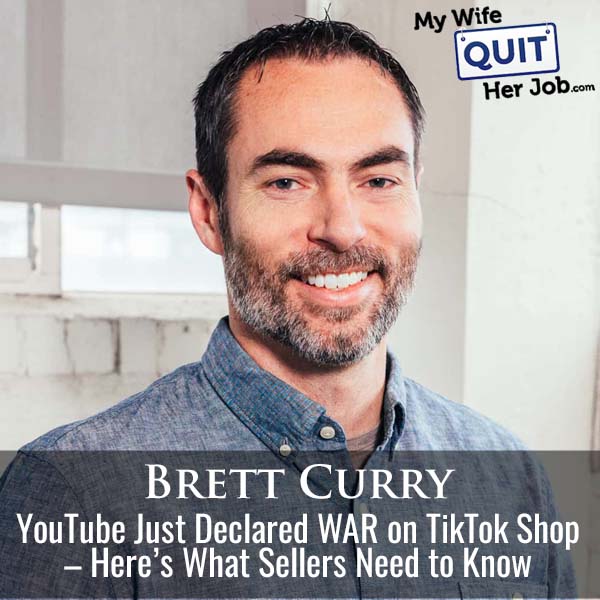597: YouTube Just Declared WAR on TikTok Shop – Here’s What Sellers Need to Know With Brett Curry

YouTube's Shoppable Video Push: A New Front in the E-Commerce War
YouTube is aggressively challenging TikTok Shop's dominance in social commerce, prompting e-commerce businesses to reassess their strategies. The video platform's foray into shoppable video content presents both opportunities and challenges for online retailers, demanding a nuanced understanding of its unique ecosystem.
YouTube vs. TikTok Shop: A Battle for Social Commerce Supremacy
YouTube's entry into the social shopping arena signifies a major shift in the e-commerce landscape. While TikTok Shop has rapidly gained traction, particularly with younger demographics, YouTube boasts a vast and diverse user base, coupled with a well-established video infrastructure. This positions YouTube as a formidable contender, potentially reshaping how brands connect with consumers and drive sales.
Brett Curry, CEO of OMG Commerce, an e-commerce agency, emphasizes the need for businesses to diversify their advertising spend. "Most DTC brands still allocate a significant portion of their budget to Meta," Curry notes. "However, relying heavily on a single platform can be risky. YouTube offers a viable alternative, providing access to a different audience and a unique advertising format."
Shoppable YouTube: What Are the Options?
YouTube offers several avenues for businesses to leverage its platform for e-commerce:
Shoppable Ads: These pre-roll video ads feature a call-to-action button or a product listing alongside the video, allowing viewers to directly purchase items featured in the ad. Creator Content: Brands can collaborate with YouTubers to create product reviews or demonstrations, which can then be turned into ads. YouTube Shopping: This feature allows creators to link their YouTube channels to their online stores, enabling viewers to purchase products directly from the video page.
Understanding Incrementality: Beyond Return on Ad Spend (ROAS)
Curry highlights the importance of focusing on incremental return on ad spend (IROAS) rather than traditional ROAS when evaluating YouTube's performance. "IROAS measures the sales you wouldn't have gotten anyway," he explains. "Platforms often overstate their impact, taking credit for sales that would have occurred regardless. YouTube, on the other hand, tends to underreport its influence."
He elaborates with an example: "Branded search campaigns may show a positive ROAS, but if you were to turn them off, you might not see a significant drop in sales. This suggests that those sales were not truly incremental. However, if you were to cut off Meta ads which represent 70% of your budget, you would definitely see a decline in revenue."
The Connected TV Factor
YouTube's prominence on connected TVs adds another layer of complexity to the equation. A significant portion of YouTube viewership now occurs on televisions, where direct click-throughs are limited. While this poses a challenge for traditional tracking methods, it also presents an opportunity to reach a captive audience in a relaxed viewing environment.
According to recent data, YouTube's streaming numbers on connected TVs surpass those of major platforms like Hulu, Disney+, and Prime Video combined, excluding Netflix. This highlights the platform's potential for driving brand awareness and influencing purchase decisions, even if those conversions are not immediately trackable.
Historical Context: YouTube's Evolution in E-Commerce
YouTube's journey into e-commerce has been a gradual evolution. Initially focused on user-generated content and entertainment, the platform slowly introduced features that allowed creators to monetize their channels through advertising and sponsorships. The introduction of YouTube Shopping marked a more direct entry into the e-commerce space, enabling creators to become retailers themselves.
The current push towards shoppable video represents a strategic effort to compete with the rise of social commerce platforms like TikTok Shop. By leveraging its existing infrastructure and vast user base, YouTube aims to become a one-stop shop for both entertainment and online shopping.
Expert Perspective: The Future of Social Commerce
Dr. Anya Sharma, a professor of marketing at the University of California, Berkeley, believes that the future of social commerce lies in creating seamless and engaging shopping experiences. "Consumers are increasingly looking for convenience and authenticity," Dr. Sharma explains. "Platforms that can effectively integrate shopping into the content they are already consuming will have a distinct advantage."
Dr. Sharma also notes the importance of data privacy and ethical considerations. "As social commerce becomes more prevalent, it is crucial for platforms to be transparent about how they collect and use user data," she cautions. "Consumers are becoming more aware of these issues and are more likely to support brands that prioritize their privacy."
Navigating the Shoppable YouTube Landscape
For e-commerce businesses looking to capitalize on YouTube's shoppable video push, several key strategies are essential:
Diversify Your Advertising Spend: Don't rely solely on one platform. Explore YouTube as a viable alternative to Meta and other advertising channels. Focus on Incrementality: Track the sales you wouldn't have gotten otherwise to accurately measure the impact of your YouTube campaigns. Optimize for Connected TVs: Create video content that is engaging and informative, even if direct click-throughs are limited. Collaborate with Creators: Partner with YouTubers who align with your brand and can authentically promote your products. Prioritize Data Privacy: Be transparent about your data collection practices and ensure that you are complying with all relevant regulations.
As YouTube continues to evolve its e-commerce offerings, businesses that adapt and embrace these strategies will be well-positioned to succeed in the rapidly changing landscape of social commerce.
Originally sourced from: WifeQuitHer Job
